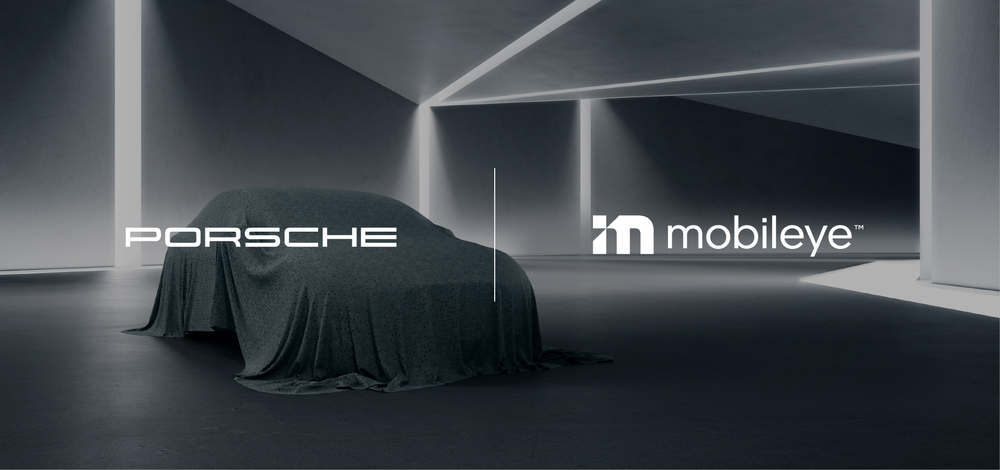powertoold
Active Member
Is that a strawman you are creating? I asked a simple question for you to elaborate what you meant.
Show us where Mobileye says they're collecting raw images and video from their current fleet.
You can install our site as a web app on your iOS device by utilizing the Add to Home Screen feature in Safari. Please see this thread for more details on this.
Note: This feature may not be available in some browsers.
Is that a strawman you are creating? I asked a simple question for you to elaborate what you meant.
That is not their business, they aren't in the business of collecting images from fleet, they collect data for their REM. They already have one of the largest automotive data set.Show us where Mobileye says they're collecting raw images and video from their current fleet.
What he's saying and I'm saying is that they are not getting the correct answers for distance and speed because they don't have Lidar on the cars nor high quality surround radar. Hence their NN models would underperform compared to if they did.Training uses inputs, which wouldn't include lidar, and the "correct answer". The training process involves repeatedly tweaking the weighting coefficients until the NN output best matches the correct answers. Correct answers for image recognition NNs typically come from humans. When Captcha asks you to click on all the pictures with buses, or the squares that include traffic lights, you are providing "correct answers" for Waymo to train against. Captcha does not ask you "how far away is the red car in the picture" or "how fast is it moving" because you'd get it wrong. Lidar gets it right, so you can use lidar data to train your distance and velocity estimation NNs. You can also use high-res radar data, or ideally both together.
That is not their business, they aren't in the business of collecting images from fleet, they collect data for their REM. They already have one of the largest automotive data set.
5) Do they have large training clusters? Can they even invest in one with only 1.3b in the bank?
I told you that already in my original reply to you. They have one of the largest automotive data sets in the world, what does having a large fleet for collecting videos and images allow them to do that they aren't already doing? They supply ADAS systems to manufacturers like Ford, GM, Hyundai, BMW, etc they are currently supplying Zeekr with Supervision and they are developing their robotaxi service Moovit testing in Germany and Israel.Ok that's great that we've established that Mobileye doesn't collect raw images or video from their current fleet.
Perhaps they do with their SuperVision fleet but not the legacy front-facing fleet.
They have one of the largest automotive data sets in the world, what does having a large fleet for collecting videos and images allow them to do that they aren't already doing?
I provided you with a link that describes what they have in their dataset. But for their REM which they build using fleet data from various manufacturers, they don't collect videos and images. That does not mean they don't have data collecting vehicles for images and videos. A lot of people don't realize this, but GM has the capability to collect videos and images from any vehicle with a camera and OnStar service. They have for years.What do you reckon they have in their dataset if they aren't collecting images and video from their immense fleet?
Tesla Autopilot falls to midpack as other high-tech systems improve
I'd day it's a defendable position. They are evaluating NAP on the highway essentially. And from a driver-assist perspective, not from a someday autonomous vehicle view. Take "collaborative steering" for example, as it's lack is a ding against Tesla in this article. Great assist idea but useless in a working FSD model.Gotta wonder if CR has this correct.https://www.consumerreports.org/car...riving-assistance-systems-review-a2103632203/
I’m not that surprised but a bit disappointed that CR did not include a review of Tesla’s latest offering, since they have it. I guess the highway version wasn’t available probably during the article data gathering. I doubt it would have placed on top or anything but curious about where it would land per these requirements. Next year I guess? Maybe they’ll add it separately.I've never driven Ford's latest. Gotta wonder if CR has this correct.
Ford’s BlueCruise Ousts GM’s Super Cruise as CR’s Top-Rated Active Driving Assistance System - Consumer Reports
I guess this was BMW/GM, not Ford.Disengaging after being stationary 30 seconds (if I understand correctly) would get old pretty quick though.
Hmm this company whose tech is is 5 years behind Tesla is somehow being picked by VW and other companies instead of FSD Beta....Mobileye is currently where Tesla was 5 years ago, even worse because they don't have their full stack cars in the USA.
Hmm this company whose tech is is 5 years behind Tesla is somehow being picked by VW and other companies instead of FSD Beta....

Because Elon Musk is an auto industry pariah. He focused on being right, but that didn't make him popular.Why isn't anyone licensing FSD Beta?
I assume you are being sarcastic.
But remember the key difference between the Tesla approach and the Mobileye approach is sensor redundancy. Both Tesla and Mobileye are developing a vision system capable of doing all driving tasks in a full ODD. Both companies are starting with vision-only. The question is do you need to add anything to get to "eyes off"? Tesla believes vision-only is good enough for "eyes off" with just more training, whereas Mobileye believes that adding radar and lidar is needed for "eyes off".


